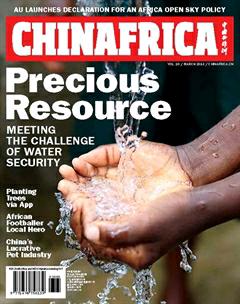Post-Incorporation Procedures for a WFOE in China
in our previous article, we looked at the registration process for setting up a legal entity in China. This article discusses the final steps to bring the WFOE to an operational level.
Obtaining company seals
In China, a companys official seal has legal authority over a director or legal representatives signature. It has the power to validate documents and contracts, regardless of who uses it. Any signed contract is only legally binding if the authentic official company seal is used. It is expected under Chinese commercial law that contracting parties are aware of and responsible for this requirement to be met for any legally binding agreement to come into effect.
An official company seal is a legal requirement for all companies operating in China and can be obtained and registered at the local public security bureau. It should be round and bear the full official Chinese company name. In many cases, the English company name, brand or logo can also be included on the official seal.
Opening a foreign exchange and renminbi bank account
WFOEs are required to have at least two bank accounts, which have specific purposes.
First, the State Administration of Foreign Exchange is responsible for approval to open a foreign currency capital contribution account. This account is used to receive capital injections from overseas parent companies. It is used for the initial and subsequent investments that may be required over the course of the WFOEs going concern.
Second, the basic renminbi account is a requirement for the WFOEs daily business operations and transactions within China. Its the only account from which WFOEs can withdraw cash in renminbi. It is thus the default business account and designated for tax payments. This account can be set up at a local bank with the WFOEs original incorporation documents.
Value-added tax(VAT) related procedures
China separates corporate VAT taxpayers into specific classes, namely small-scale and general VAT taxpayers. Smallscale taxpayers benefit from a favorable, lower VAT rate of 3 percent without any input tax deductions, but have the extra administrative burden of having to physically obtain their invoices from the local tax bureau. In certain cases, small-scale taxpayers may wish to avoid this often time consuming burden by applying for the general tax payer status. This is permissible where the applying smallscale taxpayer can demonstrate sound accounting controls. It is, however, important to note that once the general taxpayer status has been granted, the company is unable to revert back to its original small-scale status.
Small-scale taxpayers include three different business types as follows: wholesale or retail businesses with less than 800,000 yuan ($126,000) in annual turnover; manufacturers that offer services such as processing, repair or replacement with an annual turnover below 500,000 yuan ($78,900); any taxpayers offering VAT-taxable services with 5 million yuan ($789,000) maximum annual sales.
All other VAT taxpayers are automatically categorized as general taxpayers. General taxpayers are normally subjected to a VAT rate that ranges from zero to 17 percent, and are in a position to credit input VAT. They are, however, able to reduce their overall tax burden by deducting input VAT from output VAT.
The general taxpayer companies are permitted to independently issue their own special VAT invoices, or fapiao, to clients and customers, which can be applied as legal receipts for tax deduction purposes.
Registration of import and export procedures
Finally, any WFOE which focuses on import and export activities as part of its core business scope will need to undertake extra registration procedures which specifically apply to their distribution operations.
These procedures are as follows:
First, obtain an import-export license and customs registration certificate. This is necessary for the WFOE to be able to exchange foreign currencies from export sales to renminbi or vice-versa for imports. It also facilitates VAT refunds on sales on imported or exported products.
Second, the application is required to complete a foreign trader operator filing with the Ministry of Commerce.
Third, one is required to register with local entry-exit inspection and quarantine bureau and undergo a quality inspection.
Final, the entity must obtain an E-port IC card, card reader and the required software from the China Electronic Port.

